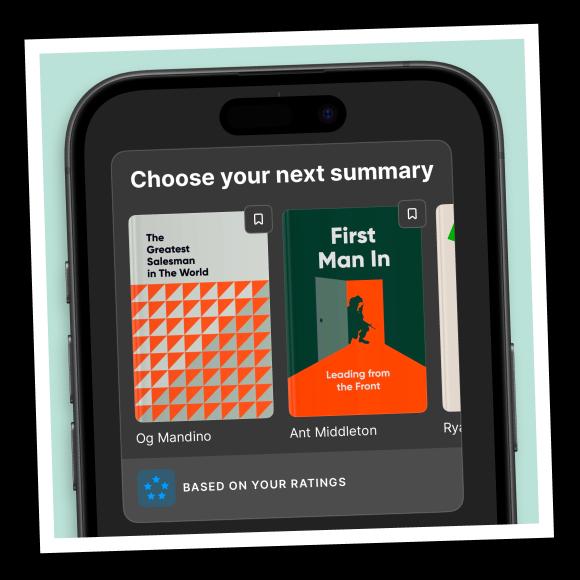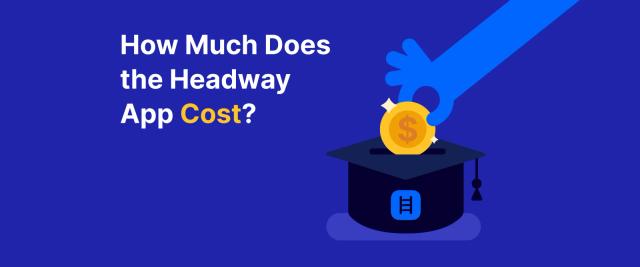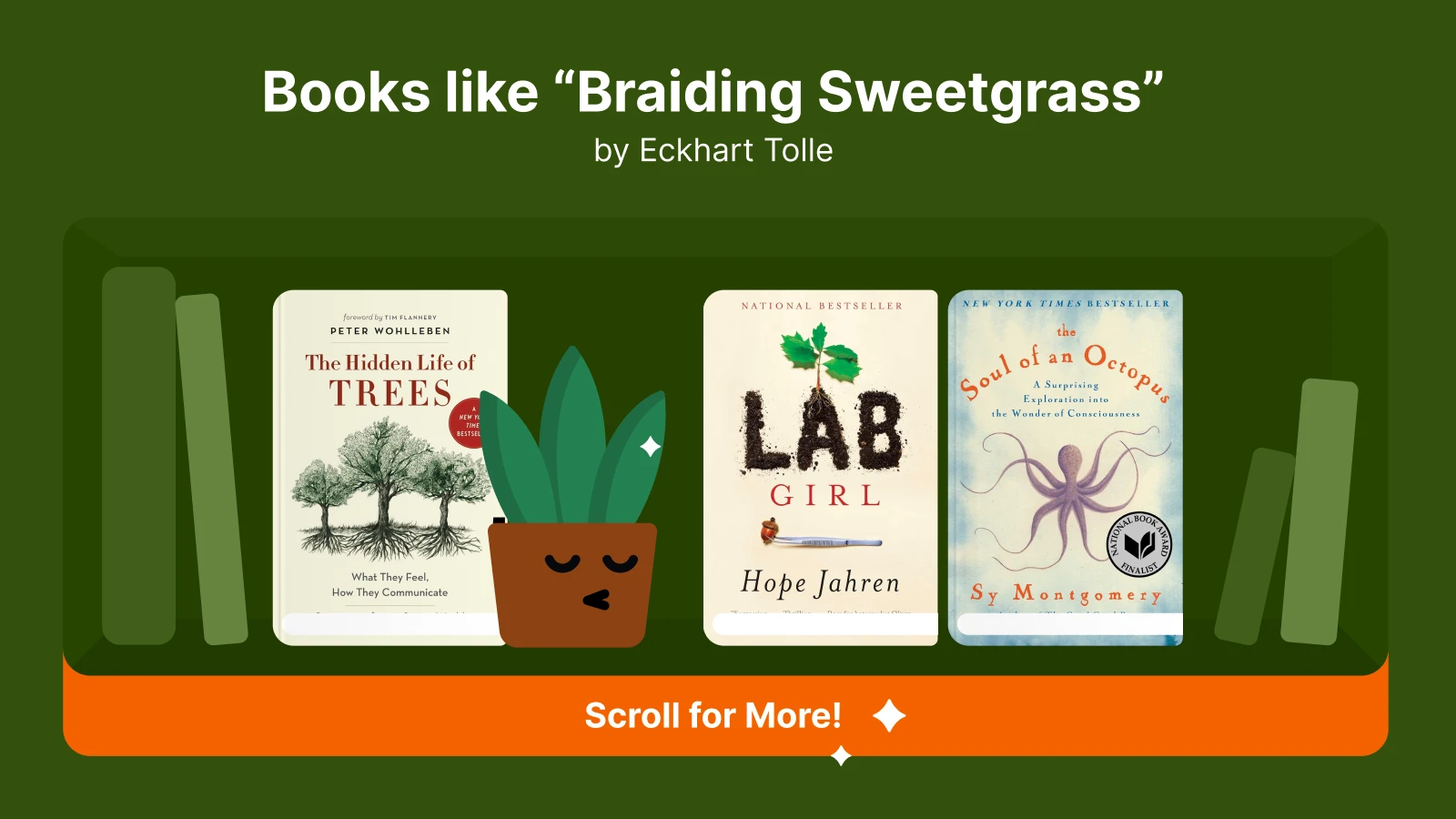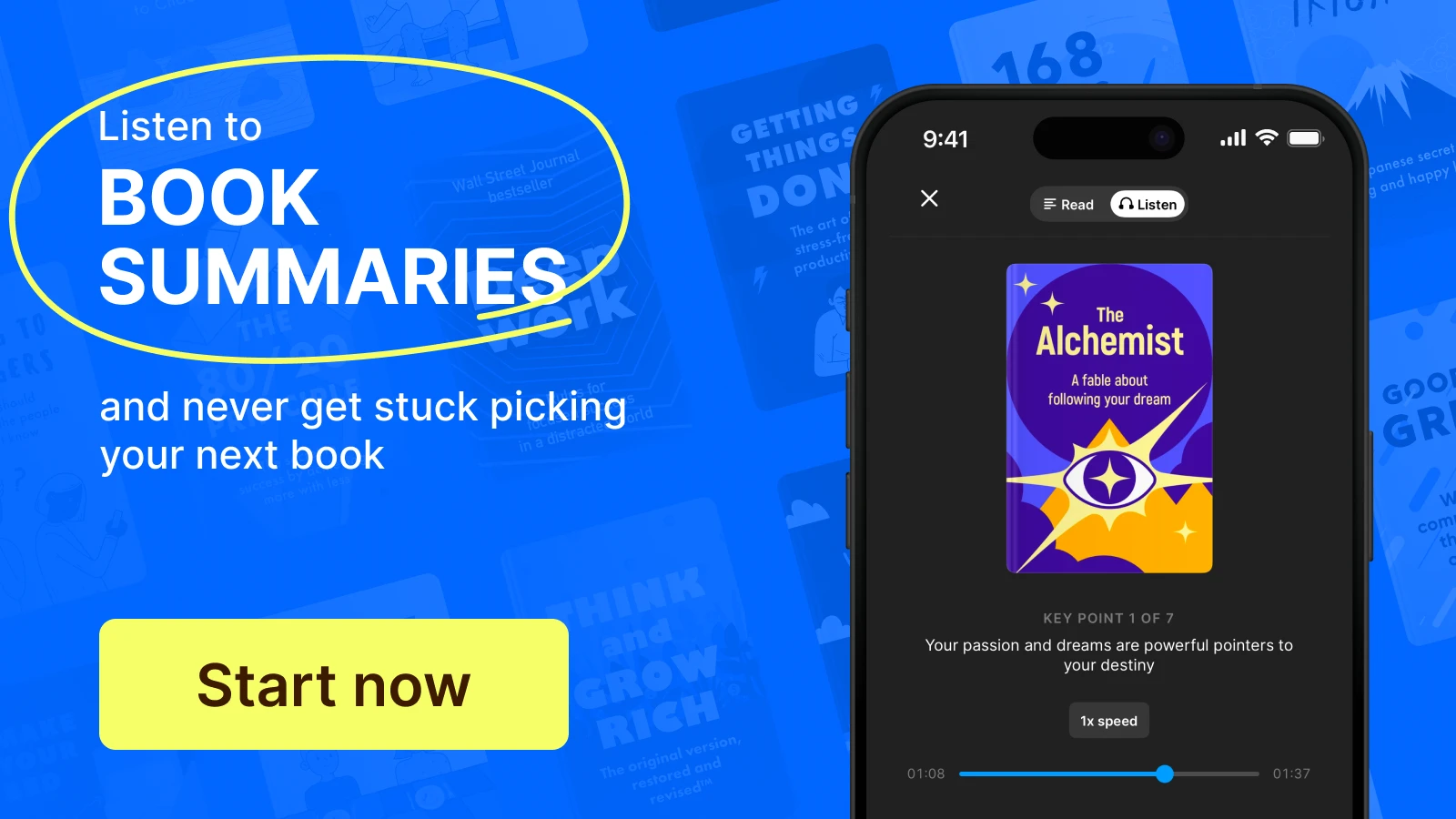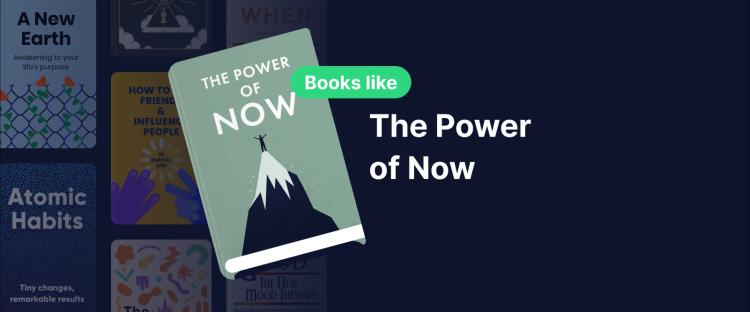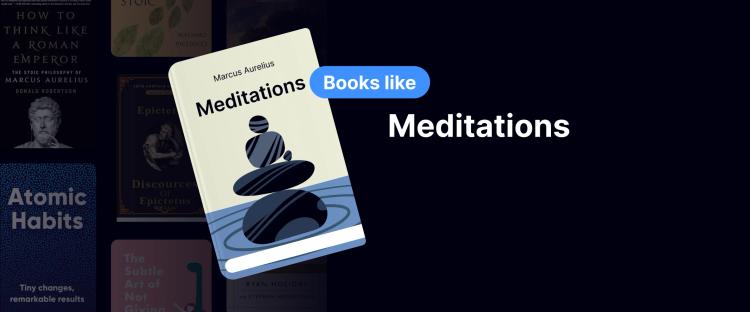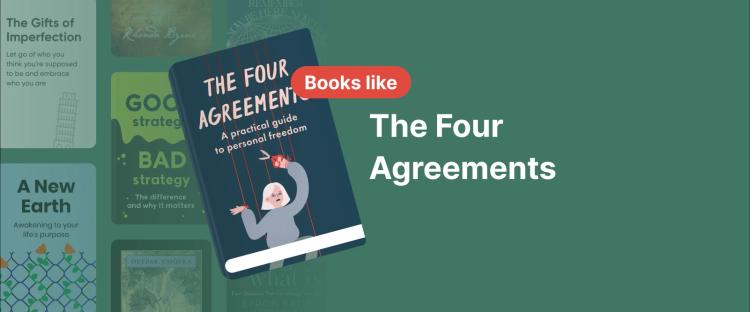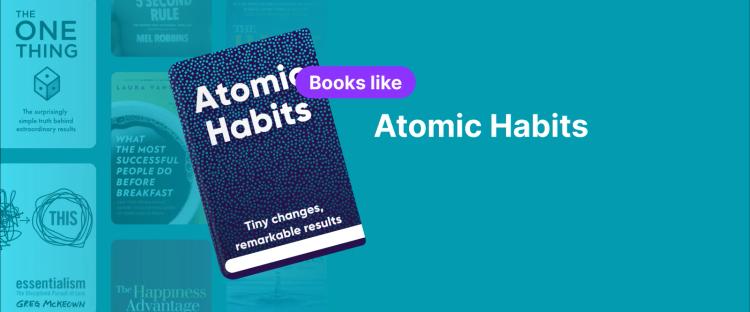If Robin Wall Kimmerer's bestseller left you yearning for more books like 'Braiding Sweetgrass' that fuse personal stories and ecological wisdom, you're in the right place. Experts Peter Wohlleben and Hope Jahren have crafted similar works that blend scientific knowledge with poetic storytelling.
From 'The Hidden Life of Trees' to 'Lab Girl,' these titles offer the same reflective depth you loved. Not sure which book to dive into next? Use Headway as your personal shortcut — explore nonfiction summaries first, then decide what's worth the full read.
Download Headway to explore ecological wisdom and self-growth insights on the go!
Quick guide to books like 'Braiding Sweetgrass'
'The Hidden Life of Trees' by Peter Wohlleben reveals how trees communicate through underground networks.
'Lab Girl' by Hope Jahren mixes botanical science with a female scientist's personal journey.
'Finding the Mother Tree' by Suzanne Simard explores research on forest communication systems.
'Gathering Moss' by Robin Wall Kimmerer blends Indigenous wisdom with moss ecology.
'Entangled Life' by Merlin Sheldrake shows the hidden world of fungi.
Keep reading for the complete list of transformative books!
Top 14 books similar to 'Braiding Sweetgrass'
These 14 new books offer equally enriching experiences for nature lovers and environmentalists. They draw from Indigenous, Black, and other cultural perspectives to deepen the connection with nature.
Each combines personal narrative with insights into ecology, climate change, and environmental activism, which invite readers to educate, inspire, and deepen our connection with the environment.
📘 Ready to deepen your Earth connection? Get Headway for all 14 nature philosophies in under 4 hours!
1. 'The Hidden Life of Trees' by Peter Wohlleben
Peter Wohlleben's 'The Hidden Life of Trees' invites you to the secret world of trees and their intricate social networks.
It details how the mycorrhizal networks operate and enable trees to communicate and share resources.
Similarities between the books:
The link between ecosystems.
Scientific exploration and storytelling.
Love for nature.
2. ‘Lab Girl’ by Hope Jahren
In 'Lab Girl', a female scientist combines personal stories with insights to show her readers the beauty of nature.
The book tells the story of Jahren, an American scientist, and deals with themes of perseverance, an insatiable curiosity, and the close parallels between plants and humanity, as well as a commentary on the unique challenges and opportunities present in the genre of American scientists.
Her writing will feel poetic and deeply personal, bringing to life fieldwork and the science of botany.
Similarities between the books:
Personal narratives meet scientific insights.
Nature and human experience.
The resilience of plants and people.
3. ‘The Soul of an Octopus’ by Sy Montgomery
Sy Montgomery's book 'The Soul of an Octopus' explores the fascinating world of octopuses. It shows how smart they are, how they experience emotions, and how they can form real bonds with humans.
Similarities between the books:
Empathy and emotional connections with nature.
Both make readers think about how intelligent animals can be.
Both mix personal stories with science.
4. 'The Nature Fix' by Florence Williams
Florence Williams' 'The Nature Fix' emphasizes the mental and physical health benefits of spending time in nature, advocating for regular outdoor exposure to enhance well-being.
'The Nature Fix' delves into scientific research showing how nature exposure reduces stress, improves cognitive function, and boosts emotional wellness.
Williams combines personal stories with scientific data to highlight nature’s therapeutic effects.
Similarities between the books:
Both books explore the beneficial relationship between nature and mental health.
They advocate for a deeper connection with the natural world.
They blend personal narratives with scientific research.
📘 Need nature's healing now? Download Headway for science-backed wellness from nature researchers!
5. ‘Wilding’ by Isabella Tree
The book shows what happens when you stop traditional farming and let the land return to the wild. It talks about how this approach brought back many different plants and animals and made the whole ecosystem healthier.
Similarities between the books:
Both show how everything in nature is connected and why ecosystems matter.
Both mix personal stories with lessons about the environment.
Both focus on protecting nature and helping damaged land recover.
6. ‘Finding the Mother Tree’ by Suzanne Simard
Suzanne Simard’s ‘Finding the Mother Tree’ explores the significance of trees and their interactions within forest ecosystems, emphasizing their complex communication systems.
‘Finding the Mother Tree’ delves into Simard’s groundbreaking research on tree communication and ecological networks. The book also touches on her personal challenges as a female scientist in a male-dominated field.
Similarities between the books:
Both books emphasize ecological interconnectedness and the importance of biodiversity.
They explore the social networks and communication habits of trees.
They blend scientific research with personal narratives.
7. 'For Joshua' by Richard Wagamese
Richard Wagamese's 'For Joshua' is a collection of letters that reflect on fatherhood, loss, Ojibwe teachings, and Indigenous identity.
The work serves as an educational guide for his son.
'For Joshua' explores themes of intergenerational trauma, cultural teachings, and personal growth. Wagamese's letters detail his experiences as an Ojibwe father and reflect on the significance of Indigenous identity.
Similarities between the books:
Both books emphasize the importance of Indigenous wisdom and perspectives.
They blend personal narratives with cultural history teachings.
They highlight the significance of passing down knowledge to future generations.
8. 'Fresh Banana Leaves' by Jessica Hernandez
Jessica Hernandez's 'Fresh Banana Leaves' underscores the necessity of using native plants to address climate issues and biodiversity loss, advocating for a compassionate relationship with nature.
'Fresh Banana Leaves' combines personal struggles with traditional Ojibwe stories to illustrate Hernandez's journey towards self-discovery and sobriety.
The book emphasizes the urgent need to include Indigenous peoples in environmental discussions to address issues stemming from historical injustices.
Similarities between the books:
Both books emphasize the importance of Indigenous communities' knowledge in fostering environmental stewardship.
They advocate for a reciprocal relationship with nature.
They highlight the necessity of addressing ecological crises through compassionate and inclusive practices.
9. 'A New Garden Ethic' by Benjamin Vogt
Benjamin Vogt's 'A New Garden Ethic' proposes a new approach to gardening that emphasizes sustainable practices and mindful relationships with nature.
‘A New Garden Ethic' discusses the moral and ethical responsibilities of gardeners in environmental stewardship.
Vogt advocates for using native plants and creating gardens that support local wildlife habitats, fostering a deeper connection with nature.
Similarities between the books:
Both books emphasize a deep connection to the natural world and the importance of ethical practices.
They advocate for sustainable and mindful approaches to interacting with nature.
They highlight the interconnectedness of ecosystems and the role of humans in preserving biodiversity.
📘 Want to garden with purpose? Get Headway for regenerative wisdom from eco-conscious gardeners!
10. ‘A Walk in the Woods’ by Bill Bryson
Bill Bryson’s ‘A Walk in the Woods’ is a humorous and insightful account of the Appalachian Trail. It blends travel narrative with reflections on nature and companionship.
Thanks to its striking humor and personal narrative, the book's complex ideas are easy to grasp.
Similarities between the books:
Environmental awarness.
Humans-nature connection.
Personal experiences and reflections on the natural world.
11. ‘Gathering Moss’ by Robin Wall Kimmerer
The book examines the role of moss in the ecosystem. It combines scientific observation, personal reflection, and Indigenous knowledge by drawing on her experiences as a moss ecologist, as well as her Anishinaabe knowledge.
Kimmerer invites her readers to think about their own relationships to nature and affirms the value of learning from the wisdom found in nature.
Similarities between the books:
Both texts detail the ecological importance of plants and their relationships with the environment and each other.
Both combine scientific observation, as well as, Indigenous knowledge.
Both texts emphasize the beauty and importance of nature.
12. ‘The Secret Teachings of Plants’ by Stephen Harrod Buhner
Stephen Harrod Buhner’s ‘The Secret Teachings of Plants’ delves into the advanced communication abilities of plants, detailing how they perceive and react to their surroundings, all without a nervous system.
The book introduces ‘heart-based perception,’ encouraging a deeper, more intuitive connection between humans and plants.
Similarities between the books:
Communication abilities of plants.
Indigenous wisdom and scientific knowledge.
A more intuitive connection with nature.
13. ‘The Overstory’ by Richard Powers
The novel focuses on nine characters whose lives are connected through their links to trees and nature. It de-centers humanity and human experiences by calling attention to the lives of non-human beings. It also highlights themes of destruction and extinction, depicting the harm done to nature at the hands of humanity. The narrative will challenge you to rethink your assumptions about consciousness, and the value of life without human intervention.
Similarities between the books:
How trees are interconnected.
Both books challenge human-centered views of life and emphasize the value of non-human beings.
Themes of destruction and the consequences of the exploitation of nature.
14. ‘Entangled Life’ by Merlin Sheldrake
In 'Entangled Life,' author Merlin Sheldrake takes the framework of an individual identity, and poses it against the backdrop of interconnected life systems.
In doing so, she challenges the reader's ideas on intelligence, individualism, agency, and separateness.
Similarities between the books:
Communication in ecosystems.
Intelligence vs individualityin the natural world.
The important functions of organisms.
📘 Mind blown by fungal networks? Try Headway for interconnected-life wisdom from science storytellers!
What is 'Braiding Sweetgrass' about?
A New York Times bestseller published by Milkweed Editions, 'Braiding Sweetgrass: Indigenous Wisdom, Scientific Knowledge and the Teachings of Plants,' is a profound exploration of the intersection between Indigenous wisdom and scientific knowledge.
Written by Robin Wall Kimmerer, a member of the Citizen Potawatomi Nation, the book weaves together stories of nature, science, and culture with poetic and reflective prose.
Kimmerer emphasizes the interconnectedness of all living things and draws from Native American traditions, advocating for a reciprocal relationship with nature, where humans learn from and give back to the earth.
Kimmerer promotes the merging of Indigenous environmental knowledge with Western scientific paradigms in order to seek balance with nature.
Drawing from her life as a mother, botanist, and Indigenous community member, Kimmerer's personal narrative, grounded in both Indigenous knowledge and environmental science, is enhanced by her meditative and poetic style.
Expand your nonfiction library collection with Headway book summaries
These book recommendations provide a variety of perspectives on nature and the importance of fostering a deep connection with the environment. From the hidden lives of trees to the intelligence of octopuses, these books cover a diverse range of topics across ecosystems, from America's vast forests to the world's oceans.
Headway lets you explore books like 'Braiding Sweetgrass' without the time commitment. Get the core ideas from a huge range of titles in bite-sized summaries — perfect if you want the insights without reading 300 pages. You stay informed and inspired on your own schedule.
Get the Headway app today and continue your journey through nature's wonders, one summary at a time!
Frequently asked questions about books like 'Braiding Sweetgrass'
What are the main themes of ‘Braiding Sweetgrass’?
The main themes include Indigenous wisdom, scientific knowledge, interconnectedness with nature, reciprocity, gratitude, and sustainability. Robin Wall Kimmerer emphasizes learning from plants and fostering a balanced relationship with the earth through Native American traditions and botanical science.
Why should I read books similar to ‘Braiding Sweetgrass’?
Books like 'Braiding Sweetgrass' deepen your appreciation for nature through personal narratives, ecological wisdom, and diverse cultural perspectives. They inspire environmental awareness, offer insights into sustainability, and strengthen your connection to the natural world through compelling storytelling and scientific exploration.
How does the Headway app help with reading more books like ‘Braiding Sweetgrass’?
Headway offers 15-minute summaries and key insights from nature writing and ecology books. You can quickly grasp core ideas, explore multiple titles efficiently, and fit reading into your busy schedule while still gaining deep knowledge about interconnectedness and environmental wisdom.
What was Robin Wall Kimmerer's famous quote?
One of Robin Wall Kimmerer's most well-known quotations is: "In some Native languages, the term for plants translates to 'those who take care of us.'" This message shows Kimmerer's perspective of plants as givers and teachers, emphasizing our gratitude and our relationship with nature rather than the view of plants as resources.
What is the metaphor of braiding sweetgrass?
Braiding sweetgrass represents the three strands of knowledge: Indigenous knowledge, scientific knowledge and the knowledge of plants. Sweetgrass is braided together for ceremony in many Native American cultures, and Kimmerer braids these different types of knowledge to create one strand to achieve a better understanding of nature and sustainability.


